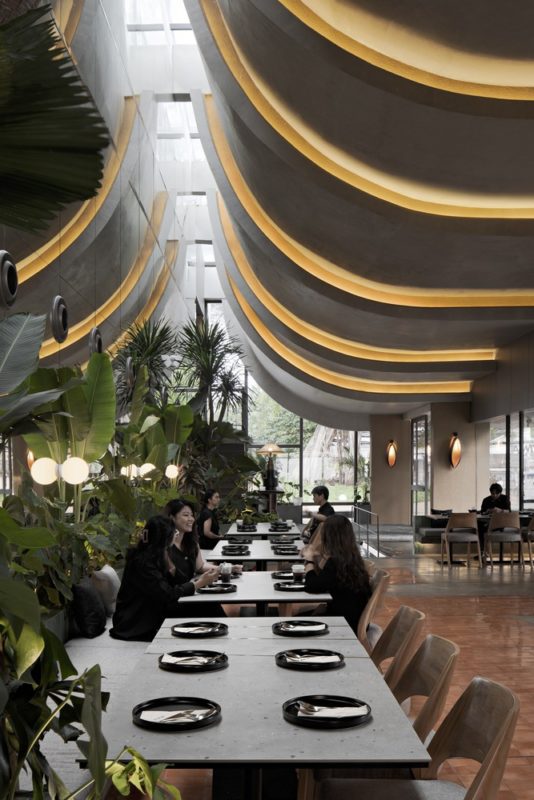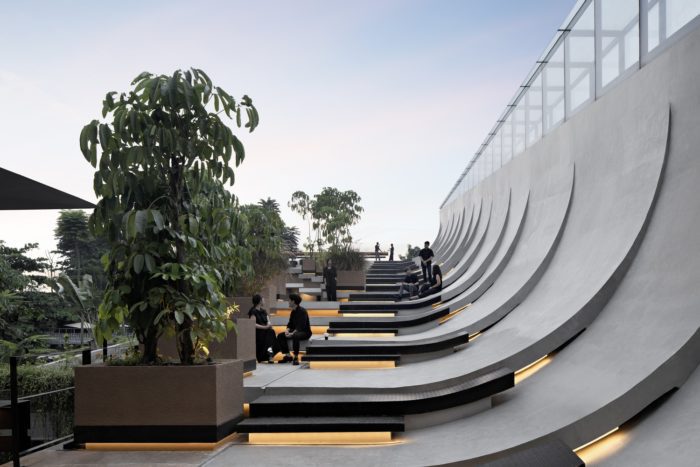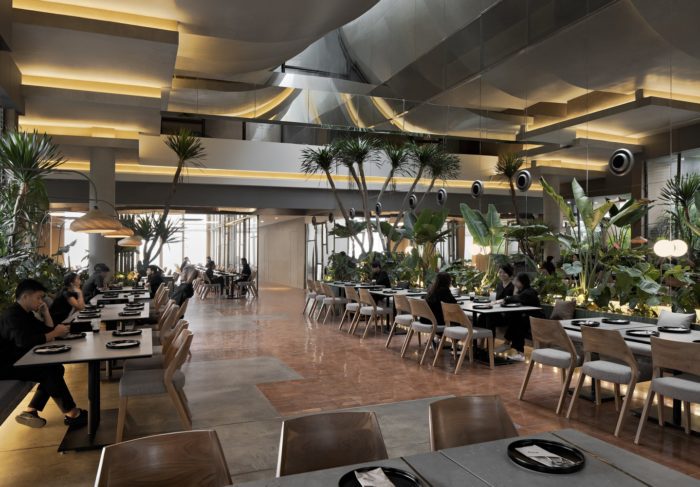Within the problem of rising land values, Aruma Cut up Backyard was created as a research of how split-level design can evolve, creating distinct zones inside a compound of a number of tenants whereas incorporating nature inside the constructed surroundings in a comparatively compact footprint. The iteration of the design displays RAD+ar’s seek for significance and evolving roles in optimizing circulation.

© Mario Wibowo
The design incorporates parts similar to roofs, facades, partitions, diagonal cantilevered constructions, and furnishings parts, all in a recent design that blends with the tropical environment of the business space. Integration parts like pure mild, greenery, views of nature, pure supplies, and different sensory experiences are included into the buildings and areas.
The design of the constructing was oriented north-south to protect the present greenery within the rear backyard. This design method aimed to increase the spatial expertise by making a wind tunnel that connects the 2 big bushes at each ends. Nevertheless, this case posed a problem in optimizing the multi-level business areas with out sacrificing any greenery.

© Mario Wibowo
To handle this problem, the structural parts have been built-in into the spatial planning of the design. This allowed for a seamless transition from the entrance backyard, diagonally making a loop connection for 3 tenants: eating places on the bottom ground, a bar within the mezzanine house, and a beer backyard in between areas prolonged to the rooftop. This integration of various spatial experiences and characters inside the improvement ensured a cohesive design.

© Mario Wibowo
As well as, gardens have been appreciating between areas to make sure clean and seamless connections between totally different supplies and elements. This not solely created a visually pleasing design but in addition enhanced the general person expertise.To optimize the structural design, the aim was to reduce materials utilization and power consumption. This was achieved by rigorously contemplating the load-bearing capability of the structural parts and utilizing environment friendly development methods. Moreover, sustainable ending supplies have been chosen, taking into consideration their environmental impression and attributes.
By focusing on optimum integration and contemplating sustainability, the design achieved a stability between performance, aesthetics, and environmental duty.
Challenge Data:
